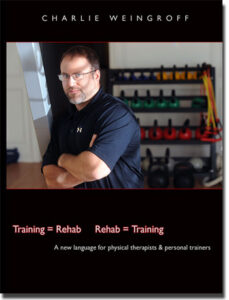Corrective Exercise: Sequencing the Law of Repetition Motion Sequence
When it comes to corrective exercise programs, everyone simply wants to know “what” is and isn’t included – and rightfully so. Picking the right strength exercises and mobility drills – and contraindicating others – is absolutely crucial to making sure you get folks to where they want to be.
However, very rarely will you hear anyone specifically discuss the “when” in these scenarios, and as I’ll demonstrate in today’s piece, it’s likely just as crucial to get this aspect correct.
To begin to illustrate my point, I’m going to reuse a quote from an article I wrote a few weeks ago, Correcting Bad Posture: Are Deadlifts Enough?, on the Law of Repetitive Motion :
Consider the law of repetitive motion, where “I” is injury to the tissues, “N” is the number of repetitions, “F” is the force of each repetition as a percentage of maximal strength, “A” is the amplitude (range of motion) of each repetition, and “R” is rest. To reduce injury to tissues (which negative postural adaptations can be considered), you have to work on each of the five factors in this equation.
You perform soft tissue work – whether it’s foam rolling or targeted manual therapy – on the excessively short or stiff tissues (I). You reduce the number of repetitions (length of time in poor posture: R), and in certain cases, you may work to strengthen an injured tissue (reduce F). You incorporate mobility drills (increase A) and avoid bad postures (increase R).
What I failed to mention a few weeks ago, though, was that the sequencing of these corrective modalities must be perfect in order to optimize the training/corrective effect and avoid exacerbating symptoms. Case in point, we recently had a client come to us as a last resort with chronic shoulder issues, as he was hoping to avoid surgery. Physical therapy had made no difference for him (aside from shrinking his wallet with co-pays), and following that poor outcome, he’d had a similar result with soft tissue treatments twice a week for six weeks. In a single four-week program, we had him back to playing golf pain free. What was the difference?
In the first physical therapy experience, he’d been given a bunch of traditional rotator cuff and scapular stabilization exercises. There had been absolutely no focus on soft tissue work or targeted mobility drills to get the ball rolling. In other words, all he did was improve stability within the range of motion he already had. In the equation above, all he really worked on was reducing the “F” by getting a bit stronger.
In his soft tissue treatment experiences, he felt a bit better walking out of the office, but ran into a world of hurt when his provider encouraged him to “just do triceps pressdowns and lat pulldowns” for strength training. In other words, this practitioner worked on reducing “I” and increasing “A,” but totally missed the boat with respect to enhancing strength (reducing “F”) and increasing rest (“R”) because of the inappropriate follow-up strength exercise prescription. Doh!
What did we do differently to get him to where he needed to be? For starters, he saw Dr. Nate Tiplady, a manual therapist at CP, twice a week for combination Graston Technique and Active Release treatments (reducing “I”) at the start of his training sessions. He followed that up with a specific manual stretching, positional breathing, and mobility exercise warm-up program (increase “A”) that was designed uniquely for him. Then, he performed strength training to establish stability (decrease “F”) within the new ranges of motion (ROM) attained without reproducing his symptoms (decreasing “N” and increasing “R).
The sequencing was key, as we couldn’t have done some of the strength exercises we used if we hadn’t first gotten the soft tissue work and improved his ROM. He may have had valuable inclusions in his previous rehabilitation efforts, but he never had them at the same time, in the correct sequence.
This thought process actually closely parallels a corrective exercise approach Charlie Weingroff put out there much more succinctly in his Rehab = Training, Training = Rehab DVD set:
Get Long. Get Strong. Train Hard.
Keep in mind that there are loads of different ways that you can “get long.” You might use soft tissue work (Active Release, Graston Technique, Traditional Massage, etc.), positional breathing (Postural Respiration Institute), mobility drills (Assess and Correct), manual stretching, or any of a host of other approaches (Mulligan, DNS, Maitland, McKenzie, etc). You use whatever you are comfortable using within your scope of practice.
When it’s time to “get strong,” you can do so via several schools of thought as well – but the important thing is that the strength exercises you choose don’t provoke any symptoms.
It’s interesting to note that this corrective exercise approach actually parallels what we do with our everyday strength and conditioning programs at Cressey Performance – and what I put forth in Show and Go: High Performance Training to Look, Feel, and Move Better. We foam roll, do mobility warm-ups, and then get cracking on strength and stability within these “acutely” optimized ranges of motion to make them more permanent.
Related Posts
Corrective Exercise: Why Stiffness Can be a Good Thing
Strength Training Programs: Lifting Heavy Weights vs. Corrective Exercise – Finding a Balance
Sign-up Today for our FREE Newsletter and receive a deadlift technique tutorial!







